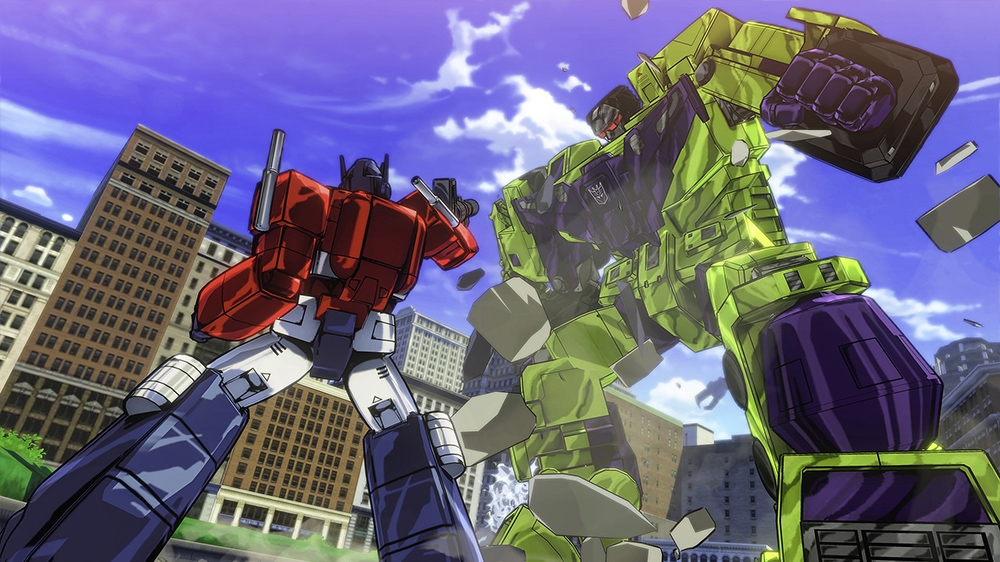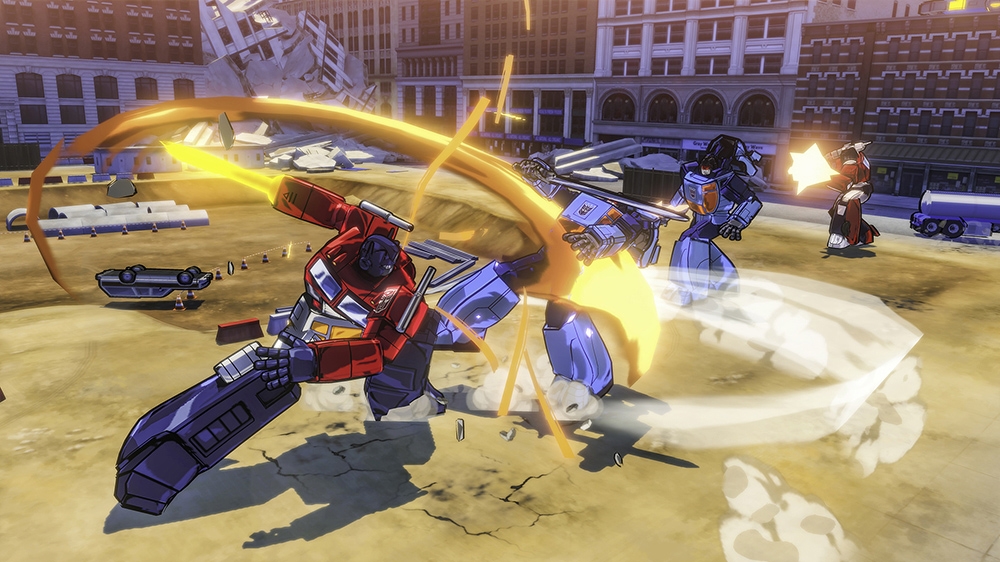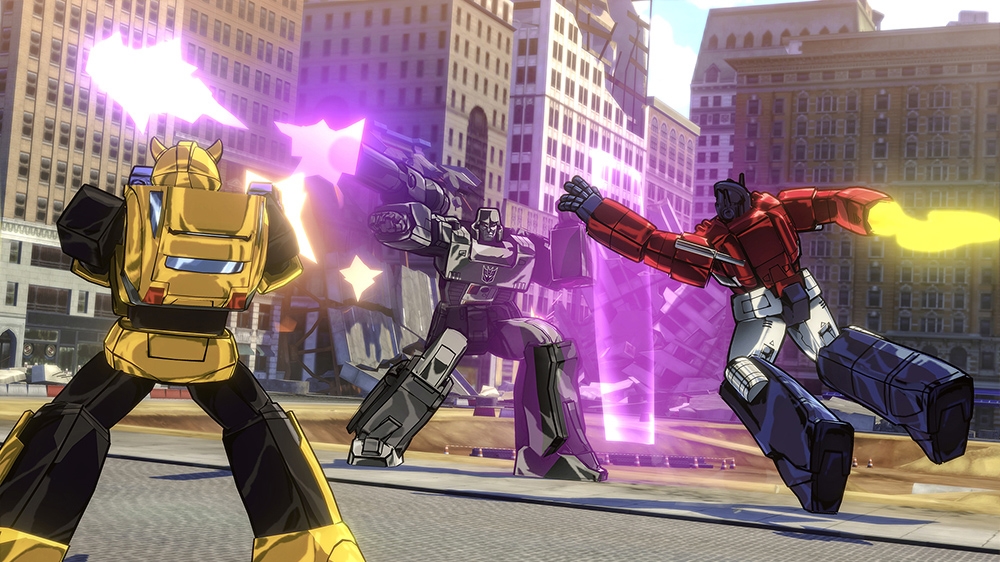
Developer PlatinumGames is taking on a lot of work lately. The team’s adding to the already-announced Scalebound with the new Nier, a chunk of Star Fox Zero and, of course, Transformers: Devastation. We had a chance to check out the latter at E3, as well as speak to the two leads behind the project.
Transformers: Devastation is meant to pay tribute to the history of the Transformers brand, staying away from the movie universe but immersing itself in many of its other incarnation. In particular, PlatinumGames took inspiration from the IDW reboot comic series, the Generations toy line and, of course, the original cartoon. Some familiar voices are making a return, like Peter Cullen as Optimus Prime and Frank Welker as Megatron, and the story’s penned by Andy Schmidt, who was behind much of the IDW series.
The gameplay, of course, is pure Platinum. Kenji Saito, who previously worked on Metal Gear Rising: Revengeance, is the director for this title, and he and his team brought in their childhood Transformers toys for a play session to keep everyone in the spirit. Those two elements definitely come together here, as the third-person action game combines Platinum’s fast pace with a sense of what makes Transformers cool: the transformation itself.

In most Transformers games, you’d generally drive around environments, then shift to humanoid form to take on foes. Saito wanted to get the vehicles themselves integrated into combat, so Devastation implements some systems to make that happen. Speeding into foes before transforming and punching yields much more damage, and there are special vehicle moves in combos that have you switching back and forth. These are different for each of the game’s five playable characters, but they can range from Optimus swinging a trailer around and hitting everything at once to Bumblebee getting small and slipping through an enemy’s legs to gain a tactical advantage and strike from behind. The other playable robots (Sideswipe, Wheeljack and Grimlock) have their own special tricks.
It seems that each side of the production is influencing the other. Since PlatinumGames is particularly good at dealing with massive foes, much of the story centers around the hulking Devastator and a mysterious force that’s somehow transforming Earth — violently — into Cybertron. You’ll fight the big guy himself, and you’ll have to find ways (like finding higher ground or staggering him) to reach his head and deal more damage.
There’s also some fun being had with the Transformers license and its inevitable connection to ‘80s nostalgia. For example, one set-piece moment meant to break up the action is a turret sequence that looks suspiciously similar to Galaga. (Soundwave also makes an appearance in his classic cassette deck form, which just fits right in.)

The development team is very proud of some of the visual touches in the game, like parallax textures designed to make the game’s cel shading look slick in motion. Photorealism certainly isn’t the goal here, but it seems like that’s been a good move, as Transformers: Devastation doesn’t look like anything else out there.
And about that pile of work I mentioned earlier? I asked Atsushi Hiroka, producer of the project, about whether that’s taken a toll on development time. Wouldn’t splitting up the talent and pumping out more titles in a short time raise some concerns, especially for Hiroka, who was most recently in charge of the less-than-stellar Legend of Korra? Apparently not. Hiroka said the team was very proud of its work, and that its internal engine, in use for ten years, is now optimized to the point that it allows for rapid development. Time will tell, but there are certainly many elements of Devastation that seem less rushed and more thought-out than you’d expect from a title with a time crunch.
Transformers: Devastation is headed for PlayStation 4, Xbox One, PC, Xbox 360 and PlayStation 3 this fall.



















